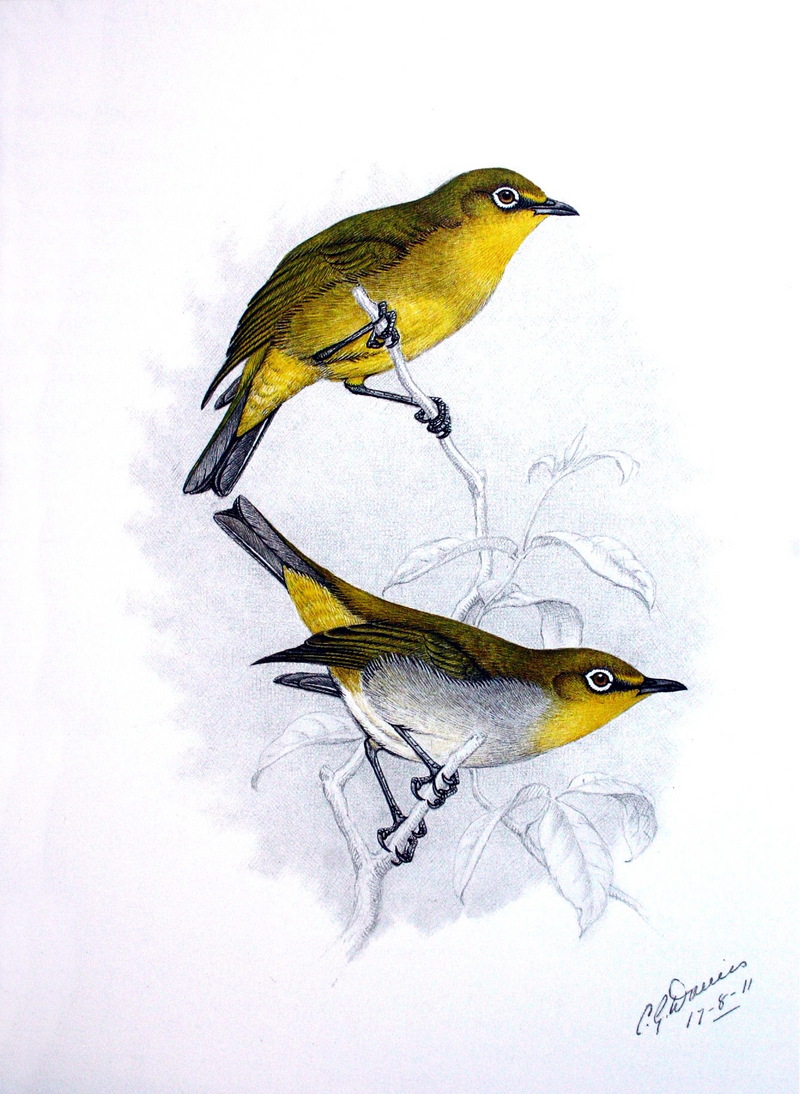Cape White-eye
From Wikipedia, the free encyclopedia
[Photo] Cape White-eye (Zosterops pallidus) adult males, subsp Zosterops pallidus virens upper, Zosterops pallidus capensis lower. Source Transvaal Museum, Pretoria. Date 17 August 1911. Author Claude Gibney Finch-Davies (1875-1920)
The Cape White-eye, Zosterops pallidus, is a small passerine bird in the white-eye family. It is an endemic resident breeder in forests, woodland and gardens in South Africa and Namibia. It is partially migratory, with some seasonal movements.
Taxonomy
There are seven subspecies. The nominate western subspecies is sometimes split as the Orange River White-eye, Zosterops pallidus, leaving the eastern races as Cape White-eye, Z. capensis. The Orange River White-eye prefers drier, more open woodland than the eastern forms, and the ranges of the two populations do not overlap.
Identification
This species is about 12 cm long with rounded wings, strong legs, and a conspicuous ring of white feathers round the eyes. The upperparts plumage is green, and the throat and vent are bright yellow. The Orange River White-eye has a pale yellow central belly with peach coloured flanks, whereas the Cape subspecies has a grey breast and belly. However, the subspecies from Mpumalanga has a green-washed breast and belly.
The contact call is a sweet twee tuuu twee twee, higher pitched and more trilled in the Orange River White-eye. The territorial call is surprisingly loud for a small bird.
Behaviour
This is a sociable species forming large flocks outside the breeding season. It builds a cup nest in a tree and lays 2-3 unspotted pale blue eggs. The eggs hatch in 11???12 days, and fledging occurs in another 12???13 days. The peak breeding season is September to December.
The Cape White-eye feeds mainly on insects, but also soft fleshy flowers, nectar, fruit and small grains. It readily comes to bird feeders.
http://en.wikipedia.org/wiki/Cape_White-eye
| The text in this page is based on the copyrighted Wikipedia article shown in above URL. It is used under the GNU Free Documentation License. You may redistribute it, verbatim or modified, providing that you comply with the terms of the GFDL. |
|

